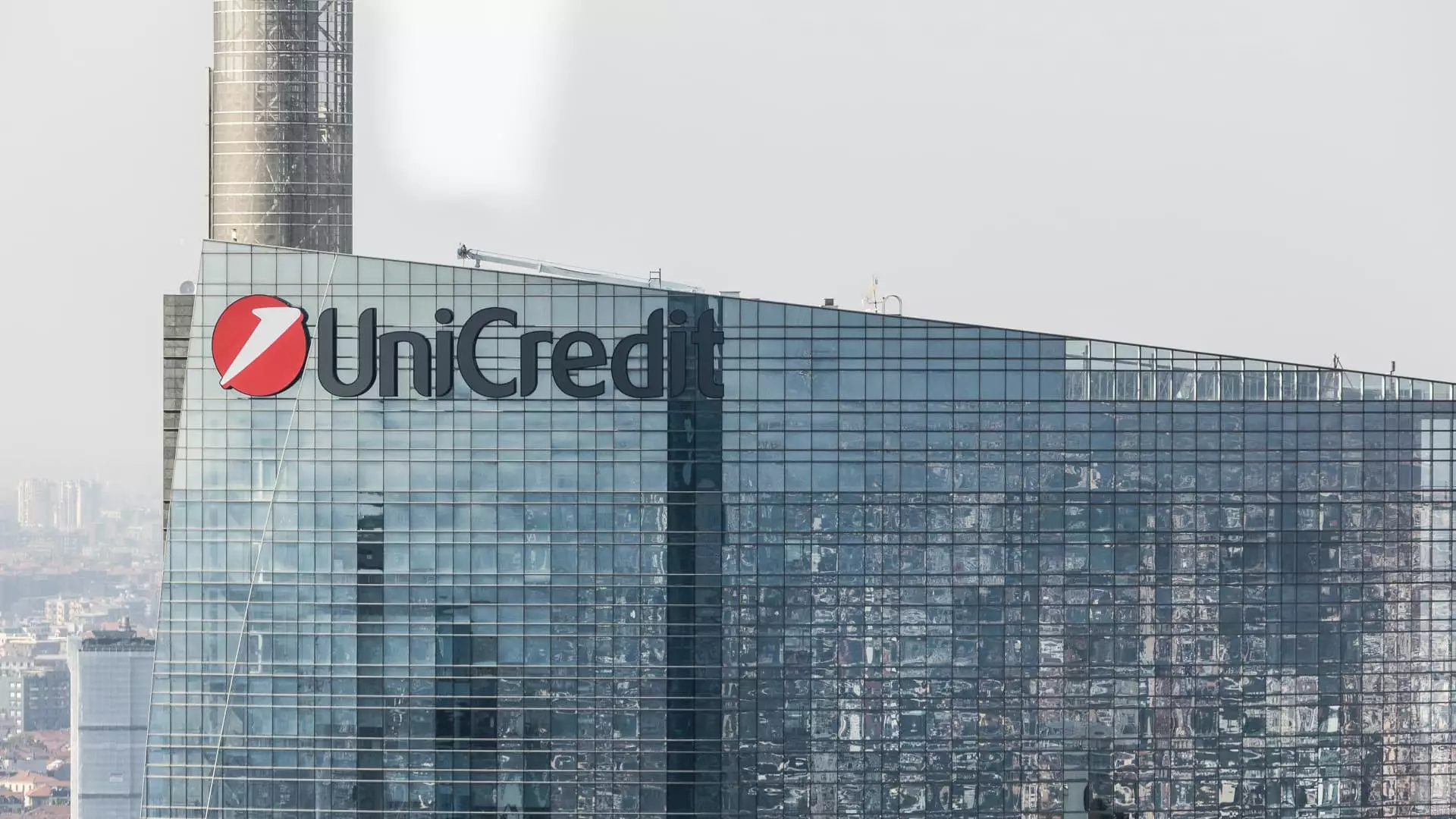UniCredit, Italy’s second-largest bank, showcased an impressive performance in the fourth quarter, which surprised many analysts. The bank reported a net profit of 1.969 billion euros, exceeding the anticipated 1.803 billion euros suggested by market analysts. This notable performance underscores the resilience of the bank, with overall revenues reaching 6 billion euros, surpassing the expected 5.898 billion euros. Such figures indicate that, despite the prevailing economic uncertainties, UniCredit has managed to remain robust and maintain profitability in a competitive landscape.
The return on tangible equity (RoTE) saw a marked drop to 11.5% from a staggering 19.7% in the previous quarter, illustrating an emerging concern regarding the bank’s yield on equity. The Common Equity Tier 1 (CET1) capital ratio also reflected a slight decline, moving from 16.1% to 15.9%, highlighting potential challenges in solvency moving forward. The increase in operating costs, which rose 9.5% in the quarter to 2.5 billion euros, raises questions about the bank’s cost management strategies in light of stagnant or declining revenues.
In 2023, UniCredit saw an annual increase in net profit by 8.1%, reaching a total of 9.31 billion euros. Looking ahead, the bank has expressed commitment to enhancing shareholder returns, upping its cash dividend payout guidance from 40% to 50% of net profit for 2025. Additionally, management has projected a RoTE above 17% for the years 2025 to 2027, which is only a slight decline from the 17.7% recorded in 2024.
However, despite this optimistic guidance for profitability, UniCredit’s future revenue projections seem less encouraging. The bank anticipates revenues exceeding 23 billion euros in 2025, which falls short of the previous year’s figure of 24.8 billion euros. This adjustment largely reflects the impact of reduced business activities in Russia and an anticipated moderate decline in net interest income. The pressure from the European Central Bank to reduce exposure in Russia adds another layer of complexity to UniCredit’s strategic plans.
CEO Andrea Orcel’s vision for UniCredit emphasizes a trajectory toward growth, aiming to not only outpace competitors but also to transform the bank into a benchmark institution within Europe. Through this perspective, UniCredit is striving to enhance its valuation within the market while fortifying its role in European banking.
The Italian lender has made headlines with its push for consolidation within the local banking sector, particularly through attempts to strengthen its stake in Germany’s Commerzbank and proposed acquisitions, such as a bid for Banco BPM. This bid was characterized by Orcel as a “fair starting point,” reflecting his ambition to solidify UniCredit’s leading position in the Italian market. However, both domestic and German responses to these maneuvers have been critical, describing the approaches as aggressive and not transparent enough.
Furthermore, the recent acquisition of a 4.1% stake in Italy’s Generali Group points to an expanding scope of interests for UniCredit, demonstrating its intentions to broaden its influence, although the bank has been careful to clarify that there are “no strategic interests” tied to this venture.
The Italian regulatory framework, particularly the golden powers legislation, complicates any takeover attempts in key sectors, including banking. This law allows the Italian government to intervene or set conditions on foreign and domestic acquisitions, impacting how UniCredit navigates its growth ambitions.
As the market watches closely, it remains to be seen whether UniCredit will pursue a dual strategy focusing on organic growth while also attempting carefully structured acquisitions. Orcel maintains that any inorganic growth must adhere to stringent financial and strategic criteria, ensuring that it aligns with UniCredit’s overall objectives.
While UniCredit’s fourth-quarter results appear strong and provide a foundation for confident projections, the bank faces considerable challenges in managing costs, navigating geopolitical tensions, and enhancing its competitive position within a rapidly changing European banking landscape. The strategies it adopts in the coming years will likely define its trajectory and resilience in this dynamic environment.

